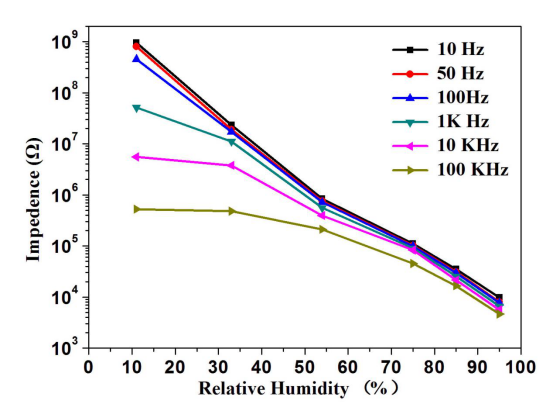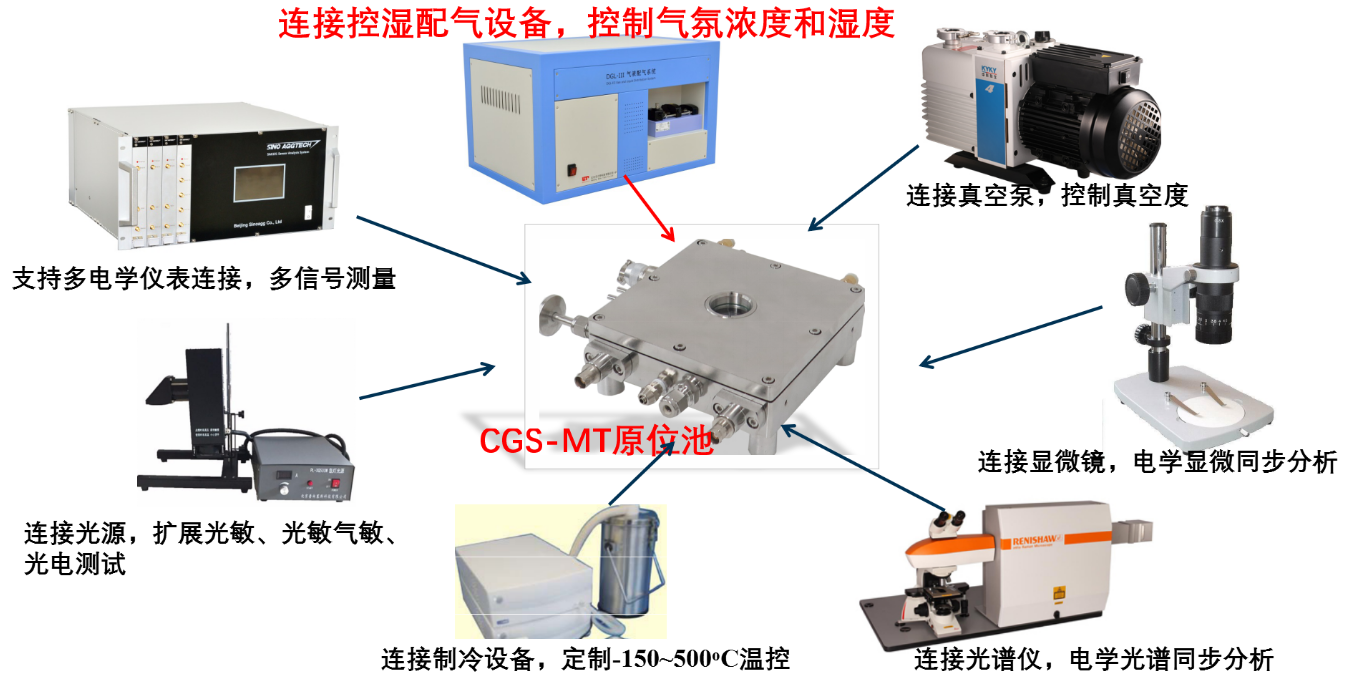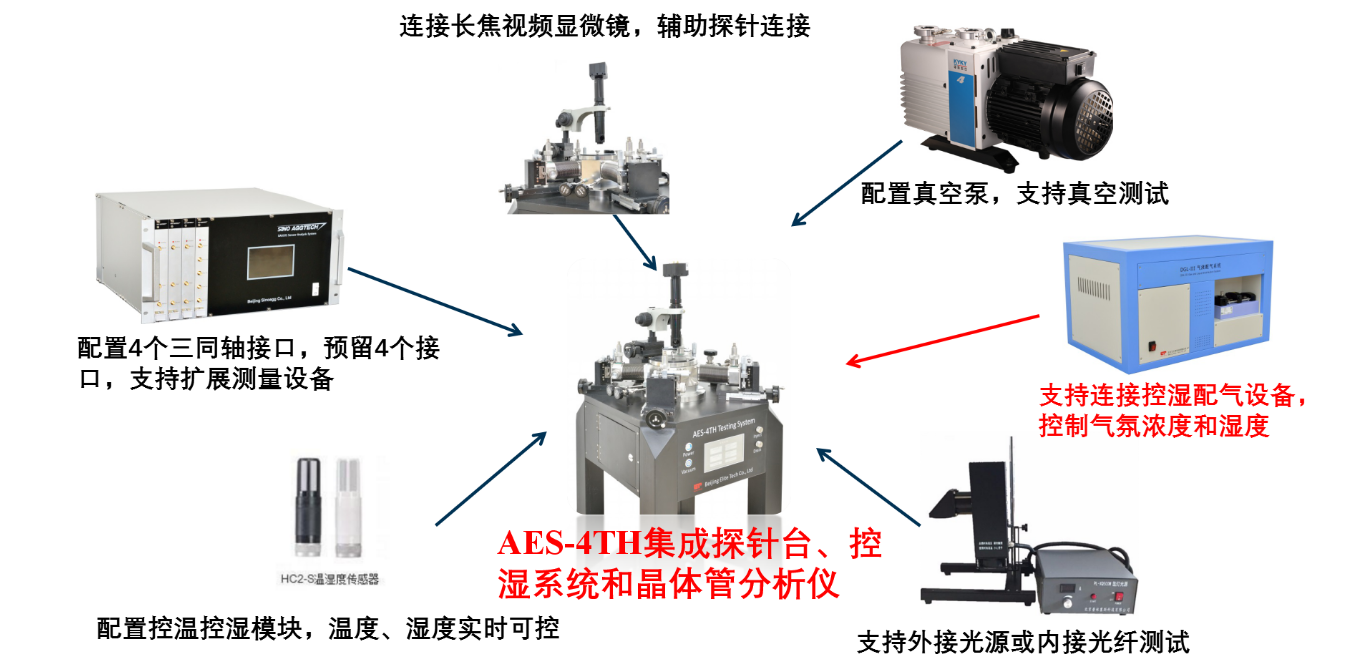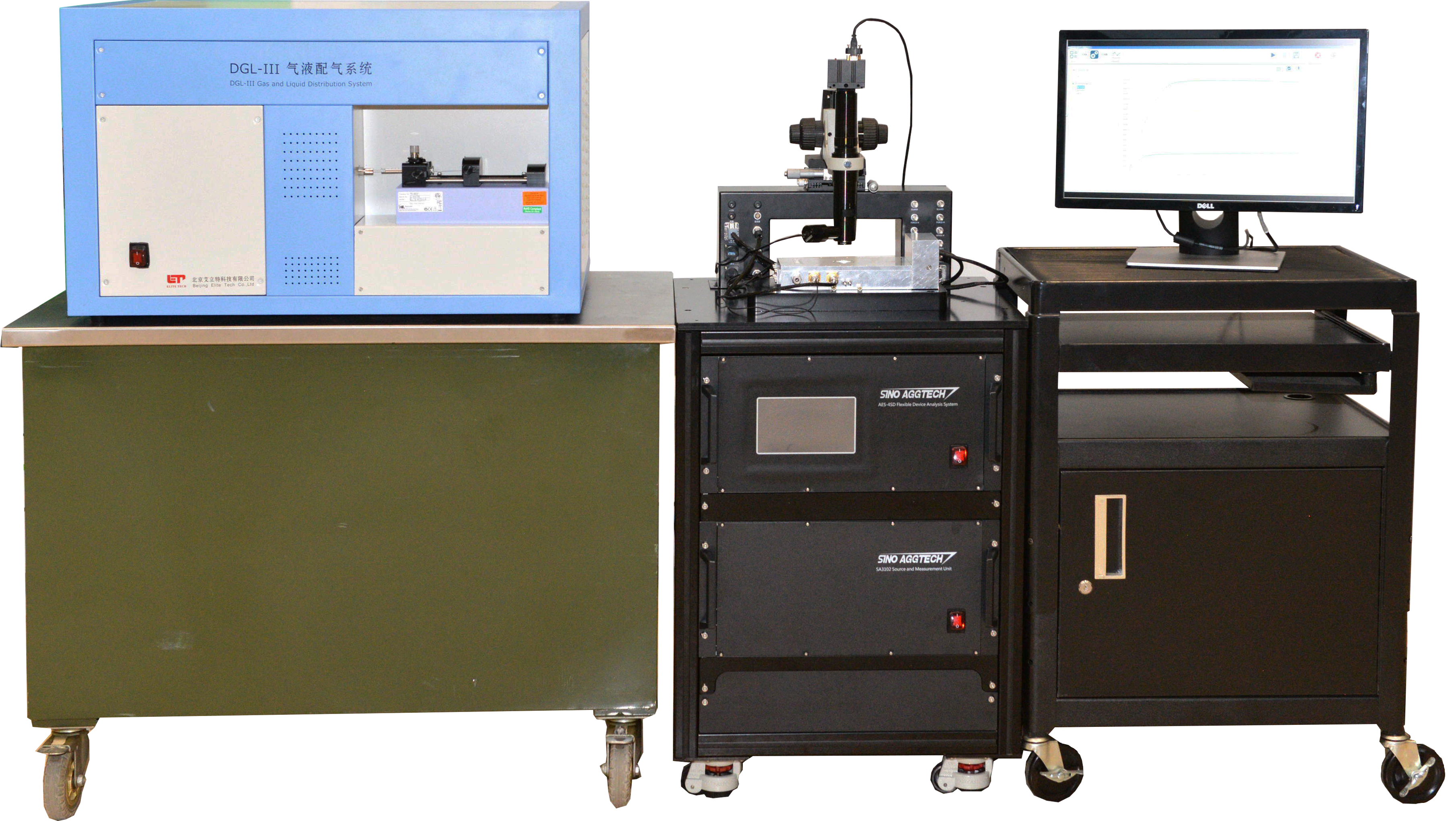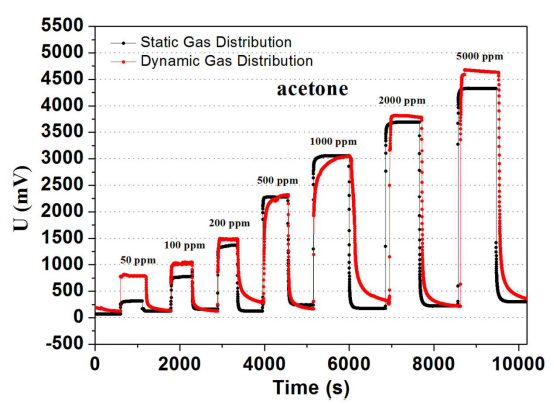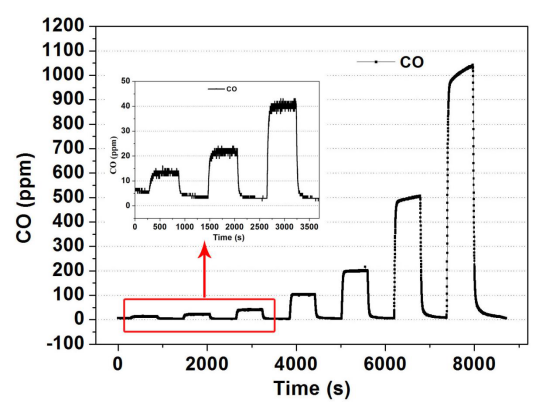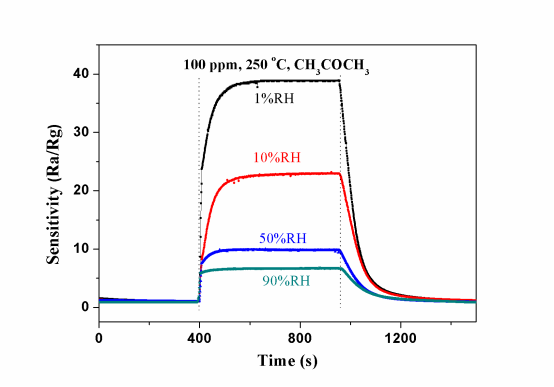Research background
1. Atmosphere concentration control: Accurate control of atmosphere concentration is the basis for the effectiveness test of gas-sensitive materials and components. There are two conventional atmosphere concentration control methods, namely static and dynamic gas distribution. The two are compared as follows
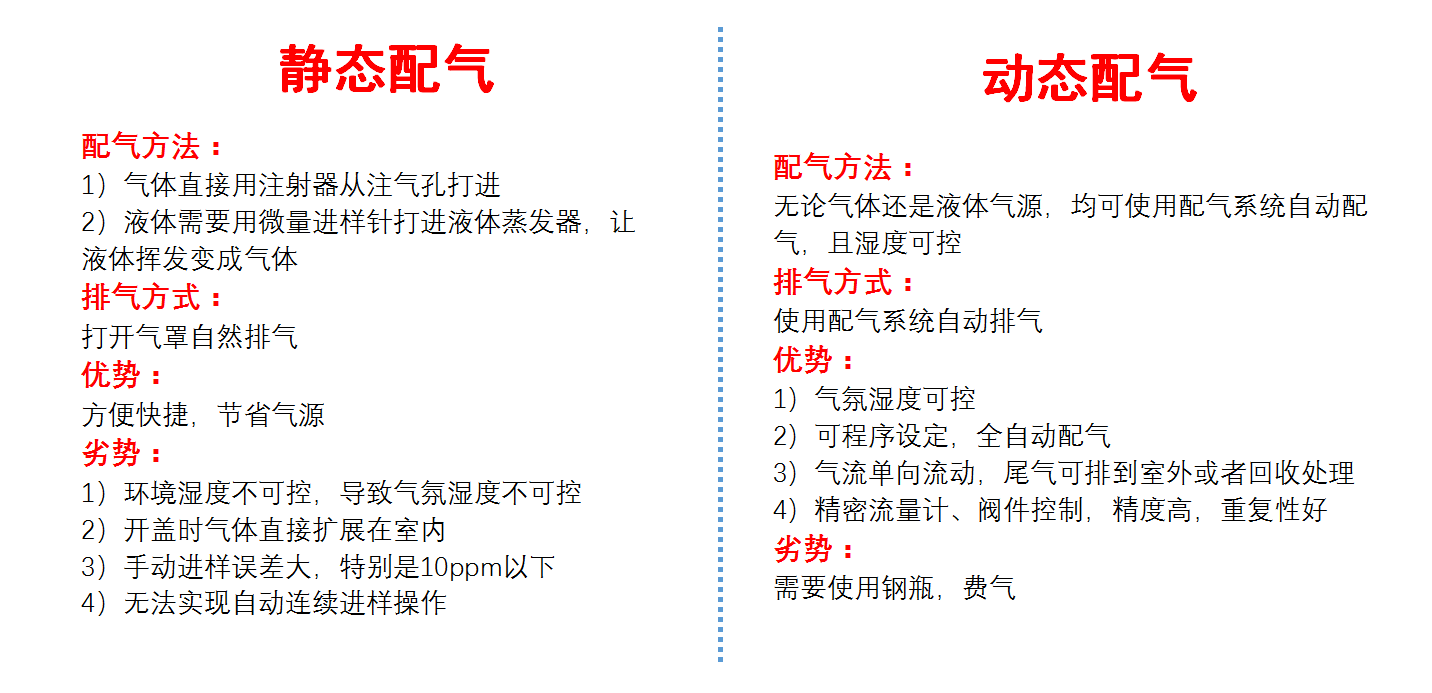
2. The importance of gas humidity control: humidity is a common interference item that affects the performance of sensors and sensitive materials. Humidity mainly affects the device performance from three aspects. 1) When the humidity is high in the performance test, water molecules will dissociate on the surface of the material, directly causing significant changes in the device performance; 2) Even at high temperatures, water molecules are vaporized and less directly involved in the reaction, but it will inevitably be affected by humidity during storage, especially affecting the long-term stability of the device; 3) The supersaturation of water molecules will form water droplets on the surface of the material, testing whether the sensor can be recovered when encountering dew, rain and other conditions in practical application. Therefore, it is important to investigate the influence of humidity in scientific research and application to improve the accuracy and long-term stability of devices. It can be seen from the scientific research papers and review comments in recent years that people are more and more concerned about the effect of humidity on the performance of sensitive elements, and the research also gradually requires in-depth analysis of the mechanism of humidity influence and the exploration of moisture resistant sensitive materials. This is particularly important in the field of sensors, in addition to solar cells, field effect tubes and other devices because of the inevitable impact of humidity in the application environment, we have also begun to explore how to resist humidity to improve the stability of the material.
Canonical study
Gas sensor research: Provide accurate atmosphere conditions for gas sensor research
Transistor device research: provides the atmosphere conditions for the study of gas and humidity sensitive characteristics of FET devices
Flexible electronic device research: Provide accurate atmosphere conditions for the gas and humidity sensitive characteristics of flexible electronic devices
Recommended equipment
DGL-III humidity control gas-liquid gas distribution system: including gas source gas distribution, liquid source gas distribution, gas + humidity control, liquid + humidity control, humidity control and other functions, especially liquid source gas distribution and gas humidity control function, is the only domestic. The equipment is suitable for dynamic gas distribution that directly uses various types of gas sources (such as NOx, H2S, CO, etc.) or liquid gas sources (such as alcohols, benzene, organic amines, ethers, ketones and other volatile liquids). The system adopts automatic control and intelligent software management, supports two working modes of concentration and flow, and supports programs to set the concentration, humidity, flow and time of the circulation valve. Intelligent gas distribution software supports gas and liquid type setting, automatic distribution of gas flow, pipeline insulation temperature setting, liquid evaporation temperature setting, MFC zero calibration, flowmeter real-time flow monitoring, etc.
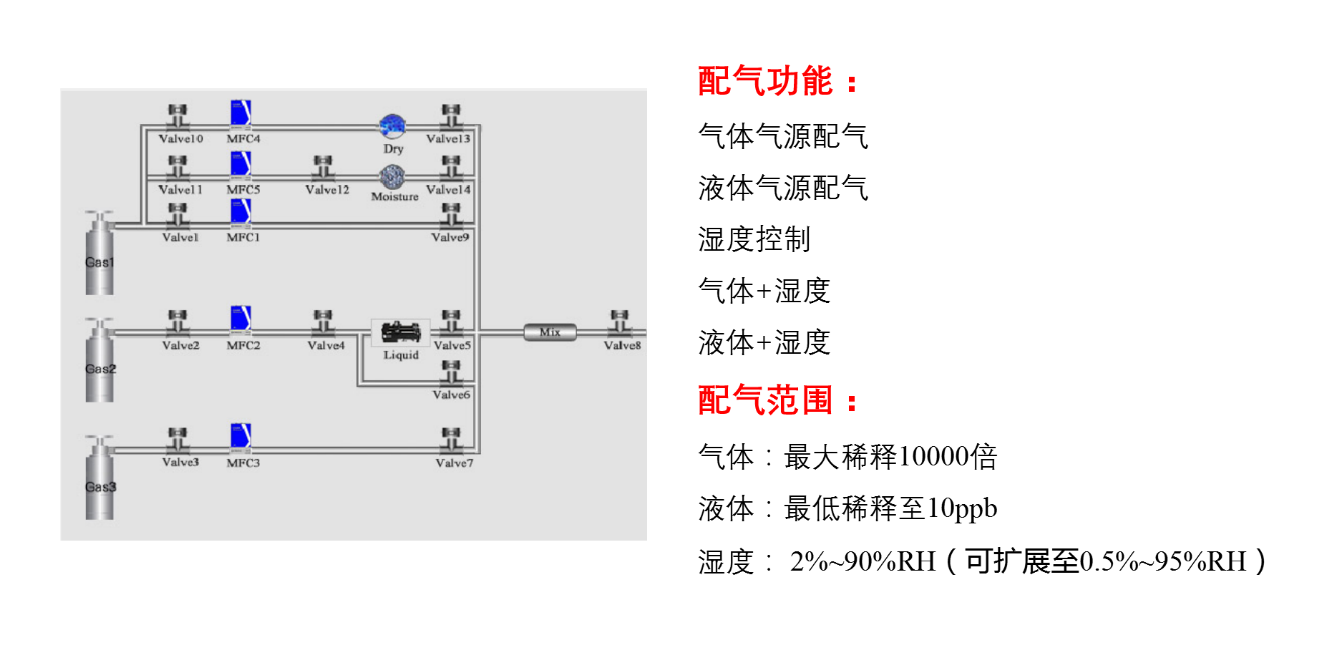
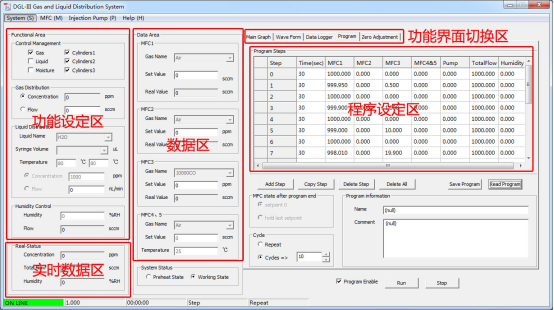
Equipment status: there is no similar integrated system for moisture control and gas distribution in China. The separate moisture control system generally adopts partial pressure method or ultrasonic method to control humidity, which produces macromolecular water and affects material properties. Most of them are simple moisture control systems, which can only be combined with the gas distribution system through self-construction. There are many problems to be solved in practical application, such as how to accurately and synchronously control the moisture flow rate and gas flow rate, how to implement fast switching, how to solve the problem of gas mixing, how to prevent water vapor condensation and so on. DGL-III humidity control gas-liquid distribution system adopts the principle of two-flow method to comprehensively control the humidity of the atmosphere. The small molecular water generated by this method is superior to the large molecular water generated by partial pressure method and ultrasonic method. Moreover, the flow rate of carrier gas is controlled by the accuracy of the flow meter, and the generated moisture can be directly used as a background gas for mixing with the target gas. It is a very perfect air distribution system with humidity control. During operation, gas and humidity can be programmed through software to set the gas distribution process, which is accurate and highly automated. Conventional humidity control range can reach 2%~90%RH (limit conditions can achieve 0.5%~95%RH), accuracy 1%RH, stability in 0.1%RH, outstanding performance.
Appendix: DGL-III principle of moisture control
The background gas is divided into two channels, both of which are controlled by MFC with high precision and fast response. The total flow rate of the background gas for moisture control is set. While the flow rate of the two channels is maintained unchanged, one of the two channels is dried by molecular sieve as the dry gas channel, and the other is dried by liquid generation device as the wet gas channel. Combined with the real-time monitoring and feedback of the high-precision temperature and humidity sensor, the background gas with a certain flow rate of specific humidity is finally obtained. The background gas can be mixed with the target gas in a certain proportion to finally obtain the target gas with a certain humidity.
The advantages of DGL-III moisture control
1. The dual-flow method is better than the moisture control equipment based on the principle of partial pressure method and ultrasonic method on the market. The equipment of partial pressure method or ultrasonic method produces macromolecular moisture, which is easy to produce macromolecular water mist, causing damage to the material, while the dual-flow method is the small-molecule moisture, which is relatively peaceful and uniform, and is more suitable for material research
2. Support long-distance testing (1.5m outside the equipment), the temperature and humidity probe is flexible and can be placed in different chambers
3. High-precision dynamic gas distribution (the highest in the industry, patent, exclusive)
4. Can accurately control the gas flow, support to control the humidity of different air sources
5. High index, the use of Rotronic high-precision temperature and humidity sensor probe, humidity control range: 2%RH-90%RH (extensible humidity range 0.5%RH~95%RH), accuracy ±0.8%RH, stability ±0.1%RH.
The limit index is related to the humidity and flow rate of the air source, and it is easier to achieve high humidity at a large flow rate, and it is recommended that the flow rate be generally controlled at 500-1000sccm.
Attachment: Comparison of similar products
The most typical is Rotronic's moisture control equipment, which also uses the dual-flow moisture control principle:
https://www.rotronic.com/zh-cn/humidity-measurement-feuchtemessung-temperaturmessung/humidity-measurement-feuchte-messun g/humidity-calibration-kalibrierung.html
Rotronic's products typically sell for more than $300,000. We use the same temperature and humidity probe, the principle of humidity control is consistent, our accuracy and indicators are even better than them, and they are internal pump circulation (our early products use this way, but only suitable for humidity sensitivity research), no flow meter to control the total flow, not suitable for dynamic valve gas link. Because dynamic control of atmospheric humidity requires unidirectional flow and precise control of velocity, they do not have this condition.
Typical result
To control the concentration of gas or liquid gas source, to test the sensitive characteristics of gas-sensitive materials, compared with static valve, dynamic valve is usually more accurate and better repeatability, especially the control of low concentration is not limited to the volume of the sampler, so the error is smaller.
For the automatic testing and calibration of gas sensors, manual gas distribution not only has errors, but also cannot realize continuous automatic sample measurement in large quantities.
Accurate control of atmosphere humidity can simulate the real application environment of the sensor, and can be used to compensate the sensor humidity or study the life of the sensor under different humidity.
The humidity control function of the equipment can be used to simply study the humidity sensitive characteristics of materials under specific inert gases or air conditions. Most of the humidity sensitive studies in the current literature are in the range of 11% Rh-95% RH. In fact, there are also research needs for low humidity, especially for water content of ppm to less than 10%RH, such as ventilators and scientific research fields.
